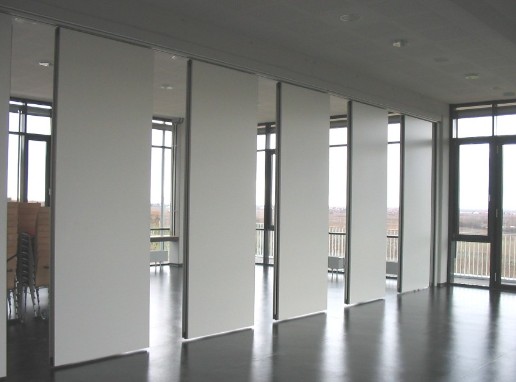An operable wall is nothing less than a revolution in the world of architect. Allowing users to get maximum advantage from available space, these walls have become a prominent choice among homeowners and commercial space owners. Some of the areas where extensive use of these walls can be seen these days include homes, hotels, offices, cafes, restaurants, universities and schools.
In both residential and commercial environment, space related needs of people are always changing. However, it is not easy or economical to build or take down permanent walls. Besides being time consuming, it also leads to loads of waste, making it harmful for the environment. This is where an operable wall emerges as a perfect solution to create more space. In homes, these walls can serve as an ideal partition between living and dining space or can be used to divide a big room into two. Similarly, in offices these walls can be used for creating extra offices, function areas, meeting rooms etc. The uses and benefits of an operable wall are many.
Generally people have a lot of apprehensions about an operable walls, specifically regarding its functionality, aesthetic appeal and durability. However, it is worth mentioning that these walls prove to be more economical than traditional walls. Although the initial cost of installing an operable wall is slightly higher, the long term benefits it offers should not be ignored, which make it a valuable investment. Homes and offices where these walls are installed tend to appear modern and also attract more buyers, in case one plans to sell his space.

Being made of interlocking panels which are connected to a track system suspended overhead, it is possible to move these walls easily. Advanced technology is incorporated, which allows these walls to be moved with the touch of a button. It means pushing or pulling the panels is out of question, as this task is managed conveniently through a remote.
The panels of operable walls are primarily available in two types or configurations. The first one is called paired and it is generally preferred for wall to wall division. In this the panels are attached to each other and can be folded. The other one is known as individual or single, which makes use of omni-directional panels. These are commonly used in meeting rooms, convention centres and hotels. Users have the option of including an access door in the panels to ensure easy entry or exit.
Besides functionality, these walls are known for their aesthetic appeal as well. The panels are available in an amazing variety of finishes, colours and materials, including wood mouldings, vinyl, veneer, fabric etc. It means users can easily select the most suitable type of material, design or finish to complement the existing decor or style. Along with visual appeal, noise control is another factor that is well taken care of, as the panels are manufactured especially to avoid noise from passing through.
Overall, operable walls are a creative and interesting way of adding functionality, appeal and flexibility to any space.
